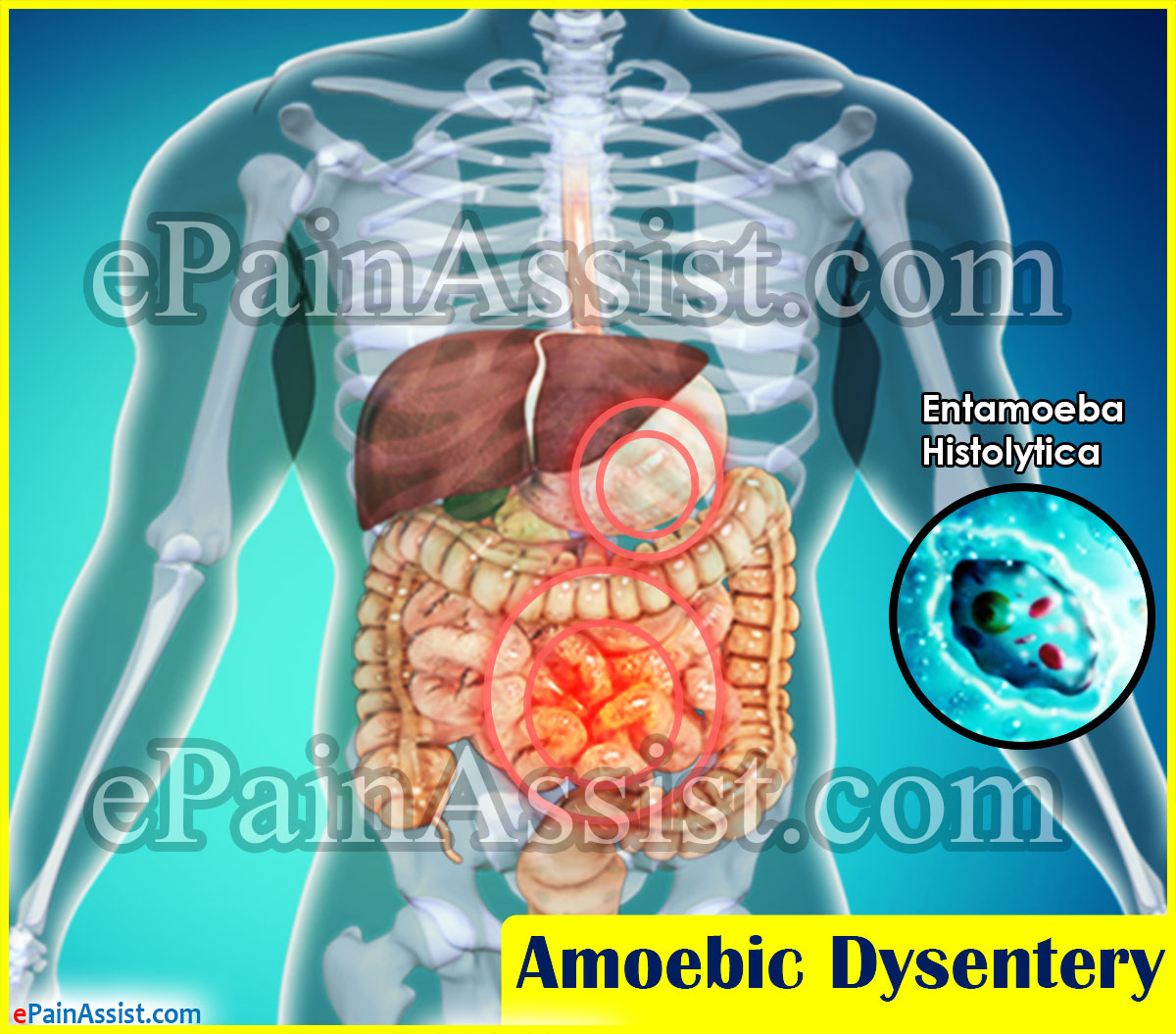Amoebic dysentery is a parasitic infection affecting the intestines, which causes diarrhea with mucus and blood. It is often noted in areas that have improper sanitation and poor quality of drinking water. The parasite enters into the body of humans through contaminated food and water and travels to the intestine, causing an infection. The characteristic feature of amoebic dysentery is frequent diarrhea or bowel disturbances with passage of blood and mucus in stools.

Causes of Amoebic Dysentery
Amoebic dysentery is mainly caused by a parasitic agent called Entamoeba histolytica, which is found in contaminated water and food. Poor sanitation and unhygienic conditions are the main reasons that promote thriving of the parasite, which can easily spread from one infected person to another through various ways of infection spread.
The infection of amoebic dysentery begins after consumption of food or water contaminated with the parasite. It reaches the intestines and causes an infection, where it affects the local area. The parasite can disrupt the lining of the intestinal wall causing ulcers and even cause abscesses, which can affect for a longer period.
The parasite forms cysts and leaves the body through feces and can survive outside too. The feces excreted by an infected person are the main cause of spread.
Spread of Amoebic Dysentery
Amoebic dysentery spreads due to exposure to infected feces, or consumption of food or water contaminated with feces containing the causative parasite. Common reasons being improper handling of feces, incorrect or unhygienic ways of diaper changing, improper hand washing, consumption of untreated water and unsafe food handling practices.
Vegetables and other food items grown in soil, which are contaminated with infected feces, using and drinking water from unsafe sources, consuming unhealthy ways of food preparation increase the risk of infection like amoebic dysentery.
Children exposed to day care centers and other child care settings can easily contract amoebic dysentery. International travelers and those travelling to countries which are known to have outbreaks of amoebic dysentery, too have more chances of contracting this infection.
Symptoms of Amoebic Dysentery
Amoebic dysentery may show symptoms up to 10 days after being exposed to the parasite. It presents with loose stools or diarrhea, mostly along with blood and mucus, foul smelling stools, abdominal pain and bloating, severe cramping pain in abdomen is often seen with frequent passing of gas or flatulence. This may also be associated with nausea, vomiting and fever with chills.
If the parasite enters the blood stream, it can travel to the liver and can form an abscess in the liver. This can present with high fever, severe chills, pain under the right rib cage, bloating of abdomen, severe diarrhea, yellowish discoloration of skin and eyes (jaundice), loss of appetite, fatigue and weight loss.
When amoebic infection persists for a longer period, chronic abdominal pain, cramping with passage of gas and watery or painful stools after eating food are often noted. Passage of blood for a longer period can cause anemia. Increased motions and disturbed appetite can lead to weight loss and fatigue.
Diagnosis of Amoebic Dysentery
If watery diarrhea with blood and mucus is noted, it is necessary to seek medical advice. History of exposure to or consumption of contaminated food and water is noted. Clinical examination may reveal signs and symptoms of amoebic dysentery like abdominal bloating and tenderness, etc.
The physician may order stool examination for laboratory analysis to detect presence of microorganisms and the causative parasite. Blood tests to detect antibodies against certain infections and other tests that detect inflammation may be done.
If further complications or liver abscess is suspected, an abdominal ultrasound may be ordered. A colonoscopy, which allows visualization of the small intestine, may be ordered, if found appropriate.
Treatment of Amoebic Dysentery
Management of amoebic dysentery includes stopping of oral solid foods and initiating oral rehydration therapy. Fresh fruit juices, oral rehydration solution and water can be given. If oral intake of fluids is not possible due to severe vomiting or diarrhea, intravenous fluids are usually given. Loss of fluids needs to be recovered by giving fluids and electrolytes to prevent dehydration.
Treatment of amoebic dysentery includes giving anti-biotics and amoebicidal medicines. The prescribed course needs to be completed as suggested. The physician may prescribe additional medicines or perform tests to ensure that the amoebic infection is completely gone after the initial treatment and plan further course of action.
Prevention of Amoebic Dysentery
Proper hand washing techniques are a must to follow; even children need to be taught the correct method in order to prevent infections like amoebic dysentery. It is necessary to wash hands with soap and water before and after using toilets or changing diapers and before handling food.
Diet following amoebic dysentery should include light bland cooked food, preferably consumed when hot and fresh. Food should be thoroughly washed in clean water, if possible use hot water or heating and cooking the vegetables is the best.
